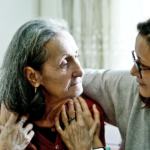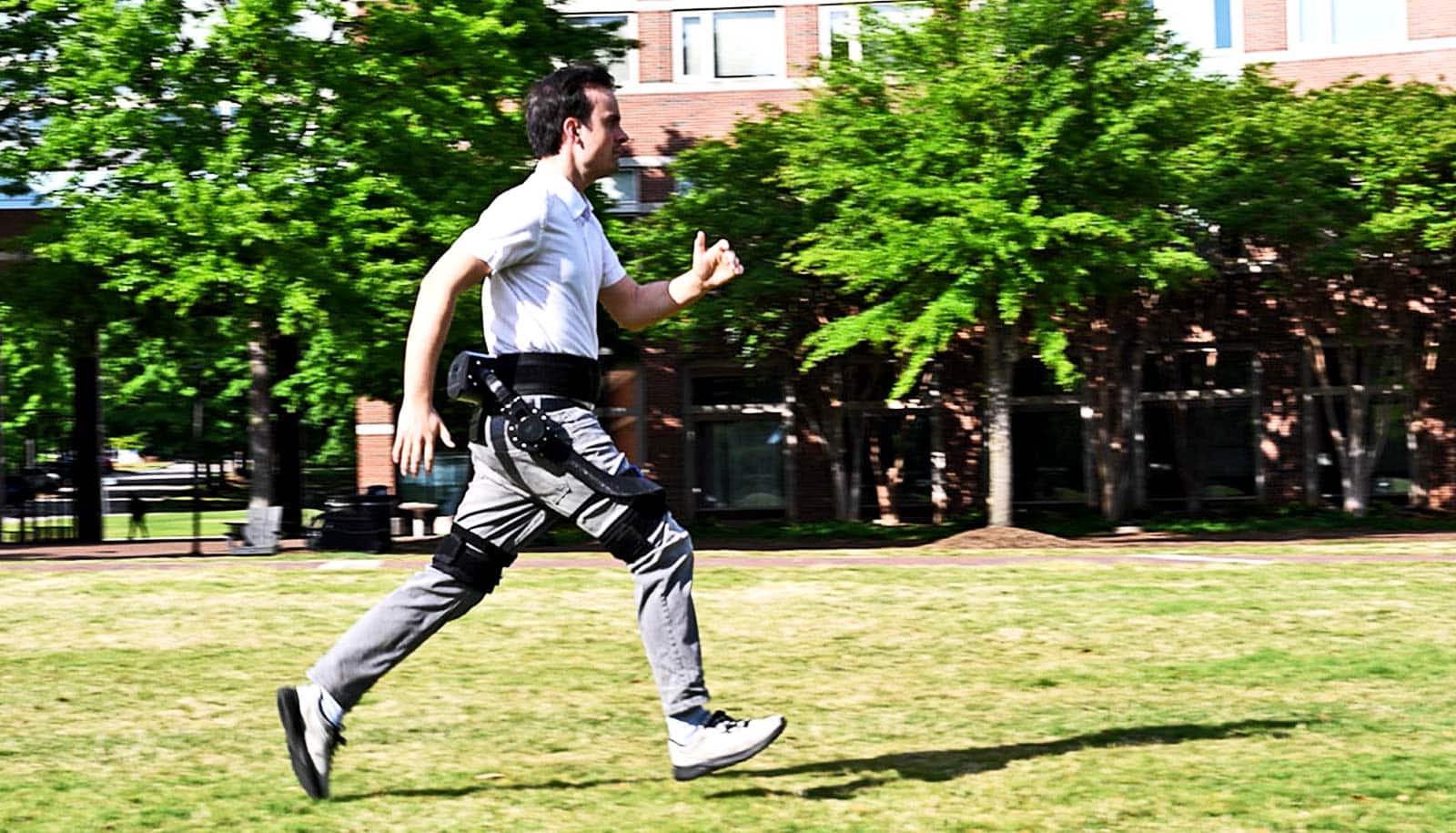A new method uses artificial intelligence and computer simulations to train robotic exoskeletons to autonomously help users save energy while walking, running, and climbing stairs.
“This work proposes and demonstrates a new machine-learning framework that bridges the gap between simulation and reality to autonomously control wearable robots to improve mobility and health of humans,” says Hao Su, an associate professor of mechanical and aerospace engineering at North Carolina State University.
“Exoskeletons have enormous potential to improve human locomotive performance,” says Su, corresponding author of a new study published in the journal Nature. “However, their development and broad dissemination are limited by the requirement for lengthy human tests and handcrafted control laws.
“The key idea here is that the embodied AI in a portable exoskeleton is learning how to help people walk, run, or climb in a computer simulation, without requiring any experiments.”
Specifically, the researchers focused on improving autonomous control of embodied AI systems—which are systems where an AI program is integrated into a physical robot technology. This work focused on teaching robotic exoskeletons how to assist able-bodied people with various movements.
Normally, users have to spend hours “training” an exoskeleton so that the technology knows how much force is needed—and—when to apply that force—to help users walk, run, or climb stairs. The new method allows users to utilize the exoskeletons immediately.
“This work is essentially making science fiction reality—allowing people to burn less energy while conducting a variety of tasks,” says Su.
“We have developed a way to train and control wearable robots to directly benefit humans,” says first author Shuzhen Luo, a former postdoctoral researcher at NC State who is now an assistant professor at Embry-Riddle Aeronautical University.
For example, in testing with human subjects, the researchers found that study participants used 24.3% less metabolic energy when walking in the robotic exoskeleton than without the exoskeleton. Participants used 13.1% less energy when running in the exoskeleton, and 15.4% less energy when climbing stairs.
“It’s important to note that these energy reductions are comparing the performance of the robotic exoskeleton to that of a user who is not wearing an exoskeleton,” Su says. “That means it’s a true measure of how much energy the exoskeleton saves.”
While this study focused on the researchers’ work with able-bodied people, the new method also applies to robotic exoskeleton applications aimed at helping people with mobility impairments.
“Our framework may offer a generalizable and scalable strategy for the rapid development and widespread adoption of a variety of assistive robots for both able-bodied and mobility-impaired individuals,” Su says.
“We are in the early stages of testing the new method’s performance in robotic exoskeletons being used by older adults and people with neurological conditions, such as cerebral palsy. And we are also interested in exploring how the method could improve the performance of robotic prosthetic devices for amputee populations.”
Additional coauthors are from NC State; the University of North Carolina at Chapel Hill; the University of Michigan; the University of California, Los Angeles; the Korea Advanced Institute of Science and Technology; and the New Jersey Institute of Technology.
The National Science Foundation; the National Institute on Disability, Independent Living, and Rehabilitation Research; a Switzer Research Fellowship; and the National Institutes of Health funded the work.
Luo and Su are co-inventors on intellectual property related to the controller discussed in this work. Su is also a cofounder of, and has a financial interest in, Picasso Intelligence, LLC, which develops exoskeletons.
Source: NC State
Author Profile
- "Center" Bias Rating
- Futurity is a nonprofit website that aggregates news articles about scientific research conducted at prominent universities in the United States, the United Kingdom, Canada, Europe, Asia, and Australia. It is hosted and edited by the University of Rochester.
Latest entries
 ScienceJune 27, 2024AI could predict Alzheimer’s disease risk
ScienceJune 27, 2024AI could predict Alzheimer’s disease risk ScienceJune 27, 2024Why do people cry?
ScienceJune 27, 2024Why do people cry? ScienceJune 27, 2024Your mom may be a better health influencer than ‘The Rock’
ScienceJune 27, 2024Your mom may be a better health influencer than ‘The Rock’ ScienceJune 26, 2024Why hurricane season 2024 could be ‘above normal’
ScienceJune 26, 2024Why hurricane season 2024 could be ‘above normal’

